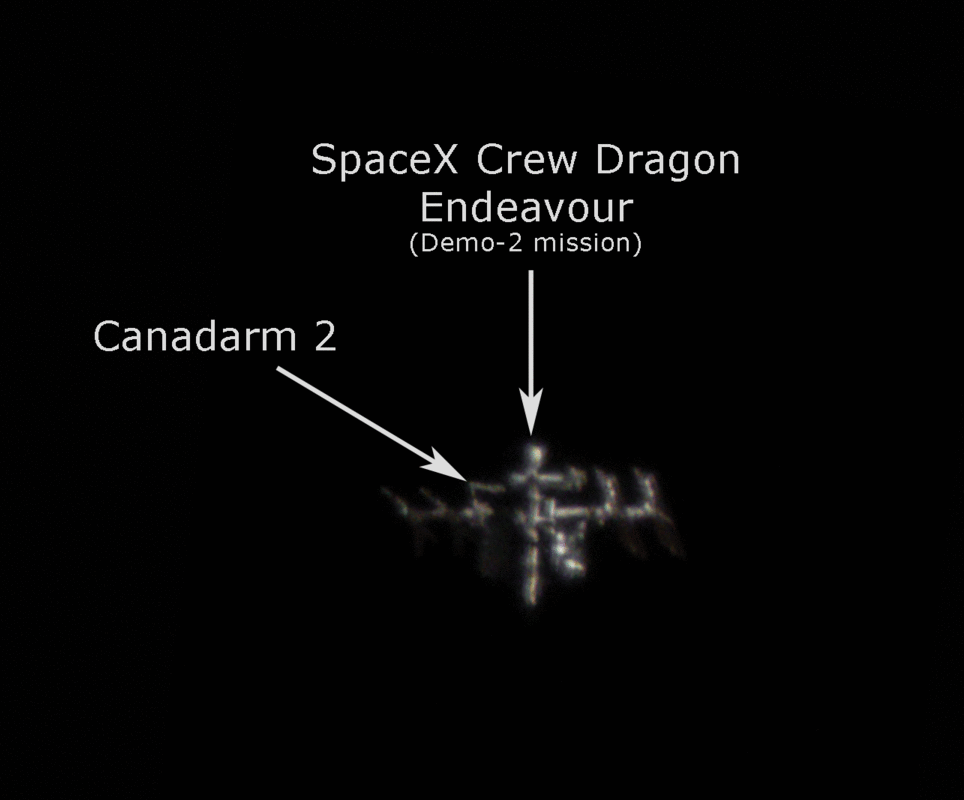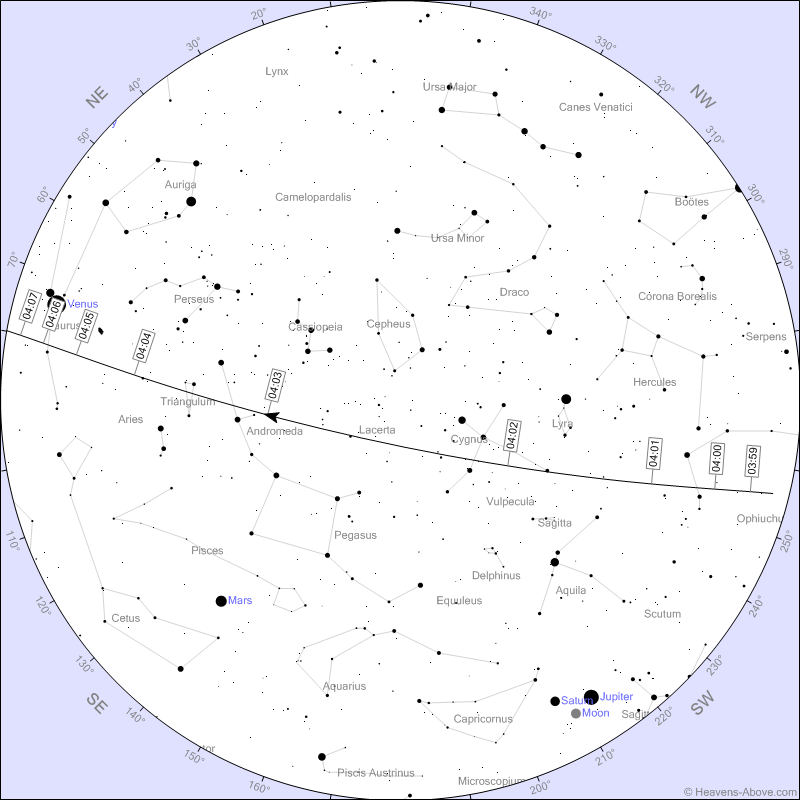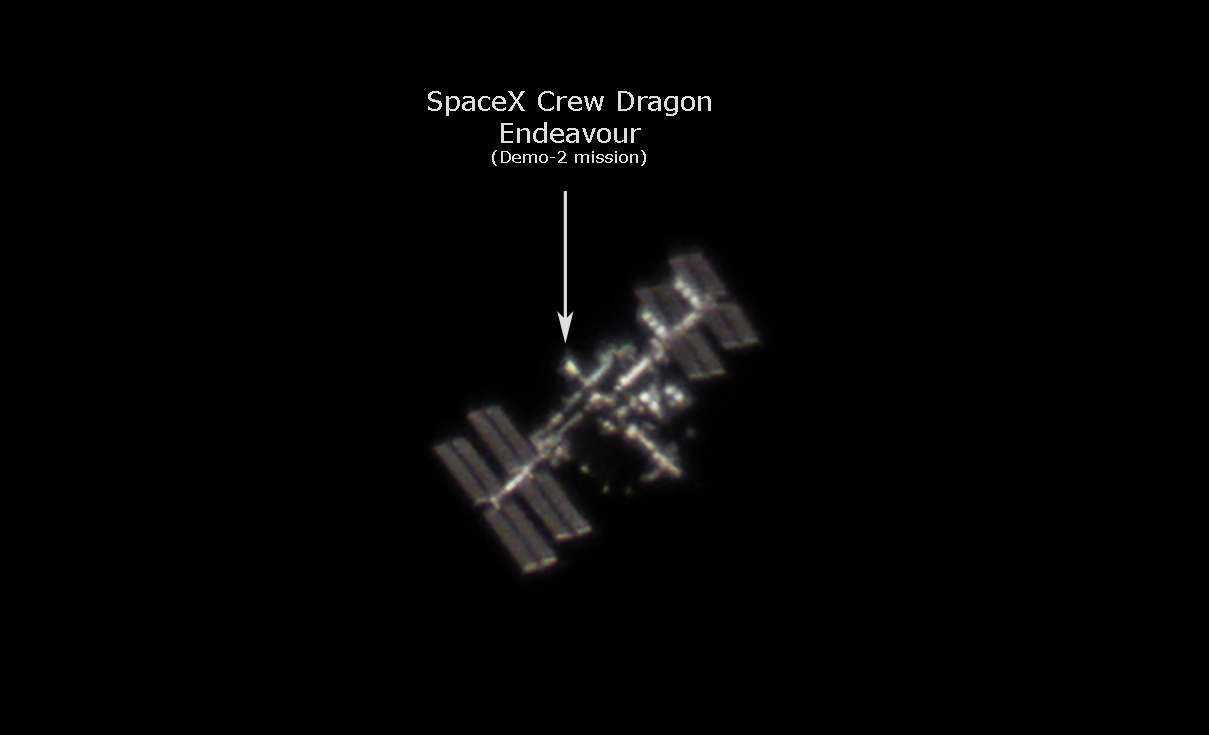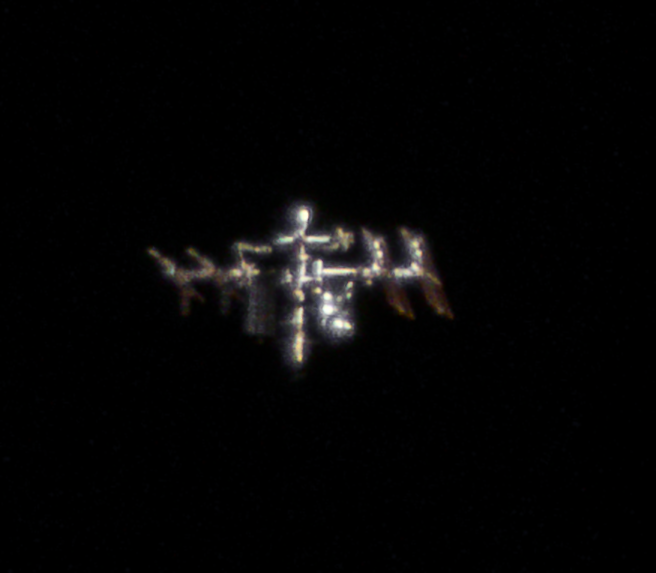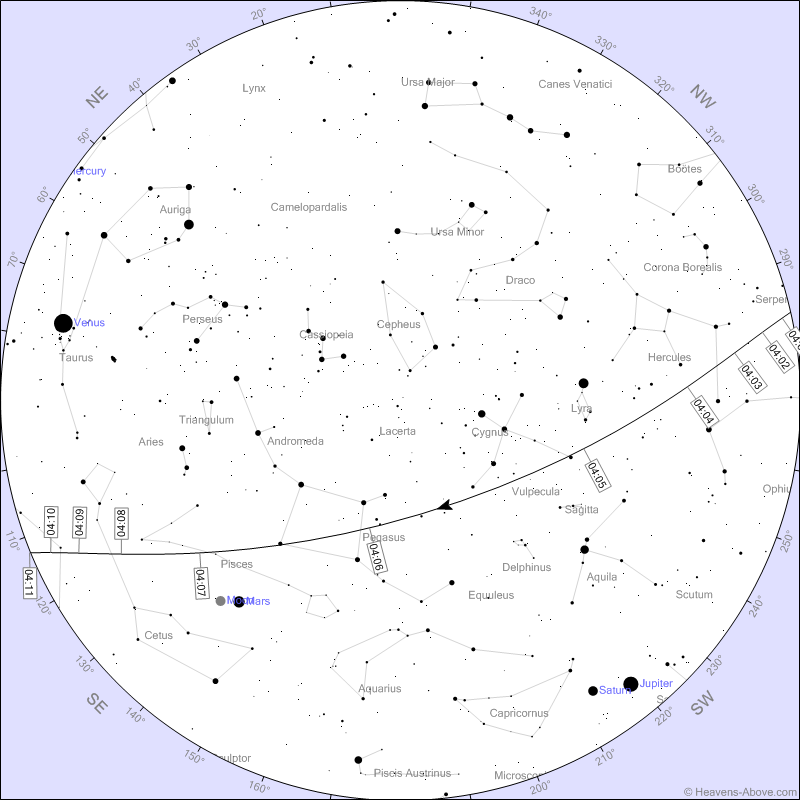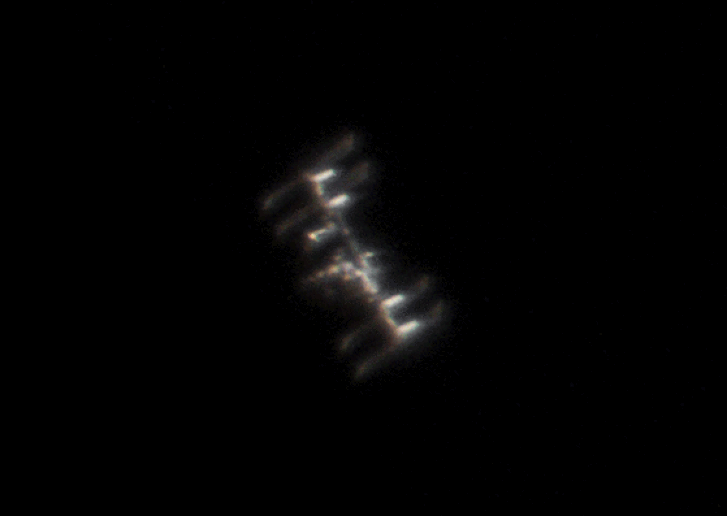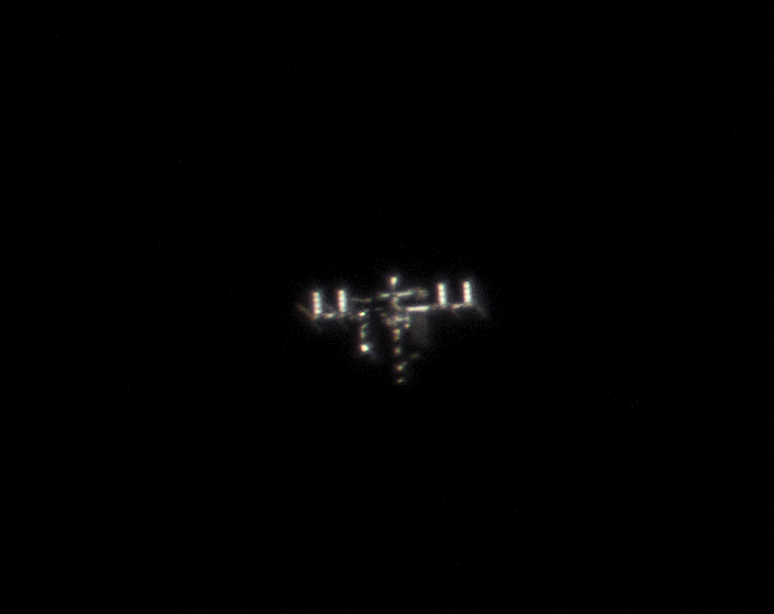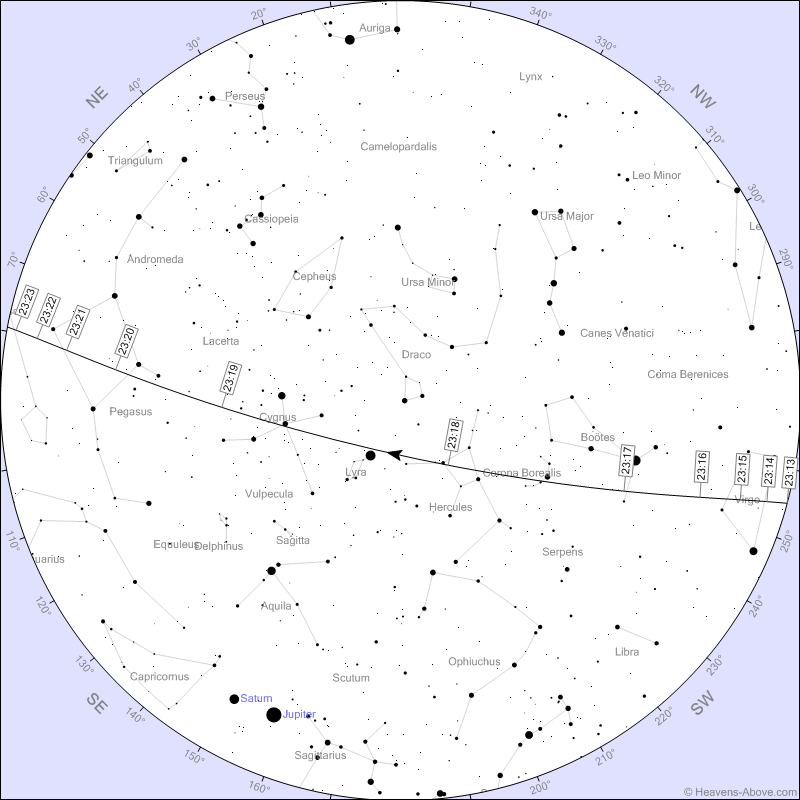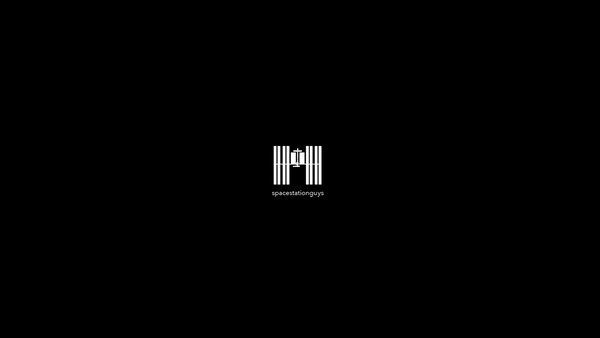SpaceX Crew Dragon Demo-2 mission to the ISS
I have been waiting for the opportunity patiently to capture this historic event with my telescope, but the passes of the International Space Station over London just ceased to happen shortly before 30th May – when the Demo-2 mission was launched. The amateur community were looking forward this event for years now and it is good to see that the mission goes well so far. I had the total privilege to snap a shot of the very first Crew Dragon docked to the ISS during the Demo-1 mission. So I was desperate quite a lot to get in to the loop whenever the opportunity is given – but until that time arrived, on this very website I created a page dedicated to SpaceX Crew Dragon missions and shared amateur photos of ISS and the docked DM-2. Take a look at the incredible photos people took from all over the world by clicking here!
But let’s see what I could capture from it lately…
6th July 2020
The first opportunity had clear sky with turbulent jet stream, so I really didn’t hold any high hopes in terms of results. But I had no choice after such a long break of no passes. Luckily I was wrong and at certain moments the atmospheric conditions allowed some sharp frames to be captured. Below you will find an animation made from 8 consecutive frames. Apart form the amazing Crew Dragon spacecraft one more object was immediately obvious to me – the Canadarm 2 robotic arm. The ongoing spacewalks (EVA) had an effect on what position they ‘park’ the Canadarm. They using the robotic arm to assist the astronauts before, during and after the spacewalks. They are replacing all the soon obsolete batteries to the newer lithium-ion ones. This project has started a few years ago and the end of work is very near. One more spacewalk required to update the battery systems of the ISS.
I was very happy for the result! I was at the beginning of a few weeks long period of ISS flybys, with already having the shot I’ve been craving for I could relax and enjoy the ride! It means in reality that imaging ISS is still a demanding and very unsocial activity, very early waking or staying up all night required. But I could choose the days best suited for imaging without fearing of running out of time (soon undocking vehicle).
12th July 2020
The next opportunity was similar to the first one in terms of weather conditions. I had two passes on that night. I did image the first pass, but definitely not the result I was craving for – usually in summer time the middle of the might passes aren’t as well lit as the ones closer to sunrise/sunset. After that I just finished imaging the incredible C/2020 F3 (NEOWISE) comet (awesomeeee!!) I rushed back home to do the second pass from my balcony.
The second pass was much more favourable and despite the frames didn’t give me the sense of having something interesting, I made an animation from those frames. Lately I live the renaissance of animation – the power of multiple frames played after each other is overwhelming seriously! I am perfecting the method of improving the smoothness of these frames and the result is not disappointing at all….
17th July 2020
For the third imaging session I came up with an idea of testing/experimenting. Every now and then I try to push the limits of manual imaging, which has its own boundaries. There is a limit we can’t really compete with motorised tracking which is absolutely fine. The superiority of a smooth mount that has the capability of keeping up with the ‘incredibly difficult to image’ motion of the ISS. Usually I use a setup that gives me 3000mm of focal length. But this time I had something else in mind once again.
This is not the first time I try larger magnifications, but somehow it never worked out well. Higher magnification also means harder to keep ISS in my field of view, also magnifying the atmospheric conditions which mostly is not the best thing in UK. On top of it I have to experiment with settings since no magic setting for every setup. Probably the reason of my not pushing these experiments forward more robustly is the limited number of passes. When it happens I don’t usually ‘wasting’ it of experimenting. But in this case I can afford experimenting a little so I did…
Instead of the 2.5x powermate this time I applied the 4x powermate I borrowed from my good friend Nicholas Joannou. It means I was shooting at 4800mm of focal length. The ASI174MM camera has larger sensor size compared to the ASI224MC, so the larger focal length is more manageable without loosing out on resolution.
The above animation in better quality and slightly longer version
Again I caught myself in the similar situation! When I looked at the raw video and frames right after imaging, it rather felt like another failed attempt. But with a good thorough image processing method I could make them look much more crisp and bright, bringing out incredibly exciting details.
One thing I need to investigate, which is that object on the truss section that caused the flare. I can identify it on all of three sessions I had so far. I need to watch the footages of the recent spacewalk which might help to see what exactly that might be. I only hope the exposed pallet they out things on like the batteries and tools.
